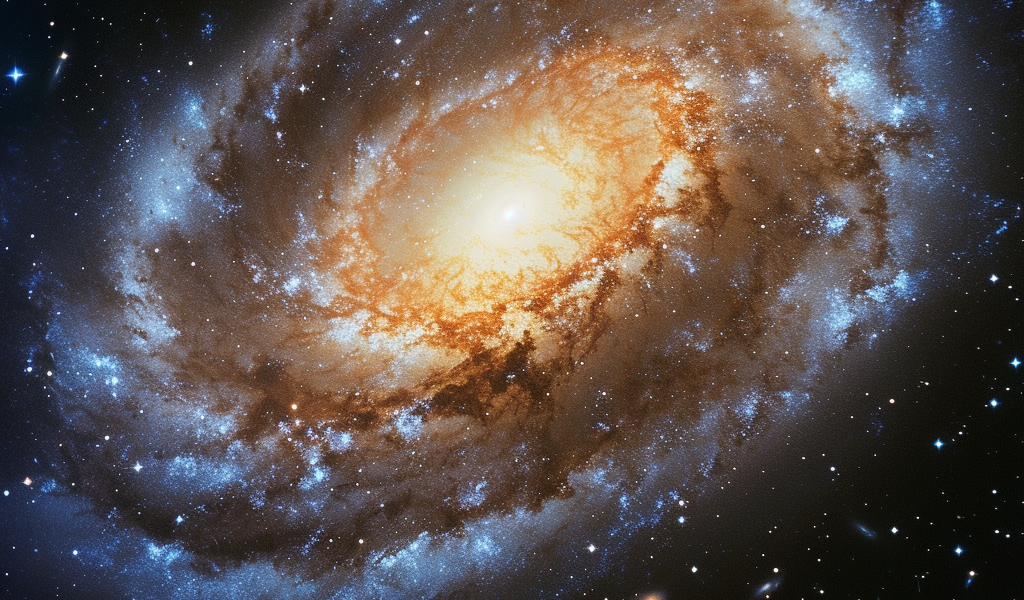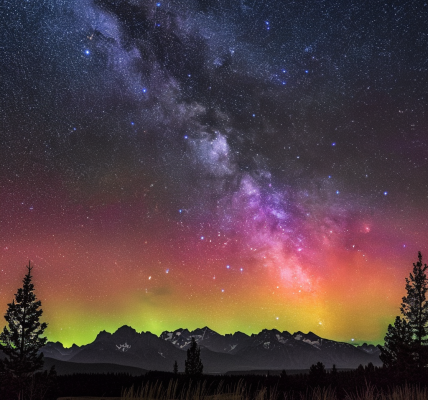Top Headlines:
Female Woolly Mammoth’s Lifetime Movements Tied to Ancient Alaskan Hunter-Gatherer Camp
Meet Bustingorrytitan shiva, New Gigantic Titanosaur from Argentina
NASA Announces End of Ingenuity Mission
Fossil of Giant Triassic Amphibian Unearthed in Brazil
Paleontologists Discover New Species of Oviraptorosaur in South Dakota
Hubble Detects Water Vapor in Atmosphere of Gliese 9827d
Scientists Produce Chromosome-Scale Genome Sequence for Arabica Coffee
Hubble Looks at Little-Known Spiral Galaxy
Jan 29, 2024 by Enrico de Lazaro
Astronomers using the NASA/ESA Hubble Space Telescope have captured an amazing photo of the spiral galaxy UGC 11105.
This Hubble image shows UGC 11105, a spiral galaxy some 110 million light years in the constellation of Hercules. Image credit: NASA / ESA / Hubble / R.J. Foley, UC Santa Cruz.
UGC 11105 is located approximately 110 million light years in the constellation of Hercules.
Also know as LEDA 61361 or TC 578, this spiral galaxy is home to an active galaxy nucleus, a supermassive black hole which is pulling in large amounts of matter from its surroundings.
The type II supernova SN 2019pjs, which occurred in UGC 11105 in 2019, while no longer visible in this image, definitely outshone the galaxy at the time.
“To be more precise, UGC 11105 has an apparent magnitude of around 13.6 in the optical light regime,” Hubble astronomers said.
Astronomers have different ways of quantifying how bright celestial objects are, and apparent magnitude is one of them.
“Firstly, the ‘apparent’ part of this quantity refers to the fact that apparent magnitude only describes how bright objects appear to be from Earth, which is not the same thing as measuring how bright they actually are,” the researchers explained.
“For example, in reality the variable star Betelgeuse is about 21,000 times brighter than our Sun, but because the Sun is much, much closer to Earth, Betelgeuse appears to be vastly less bright than it.”
“The ‘magnitude’ part is a little harder to describe, because the magnitude scale does not have a unit associated with it, unlike, for example, mass, which we measure in kilograms, or length, which we measure in meters.”
“Magnitude values only have meaning relative to other magnitude values.”
“Furthermore, the scale is not linear, but is a type of mathematical scale known as ‘reverse logarithmic,’ which also means that lower-magnitude objects are brighter than higher-magnitude objects.”
“As an example, UGC 11105 has an apparent magnitude of around 13.6 in the optical, whereas the Sun has an apparent magnitude of about minus 26.8.”
Accounting for the revers





